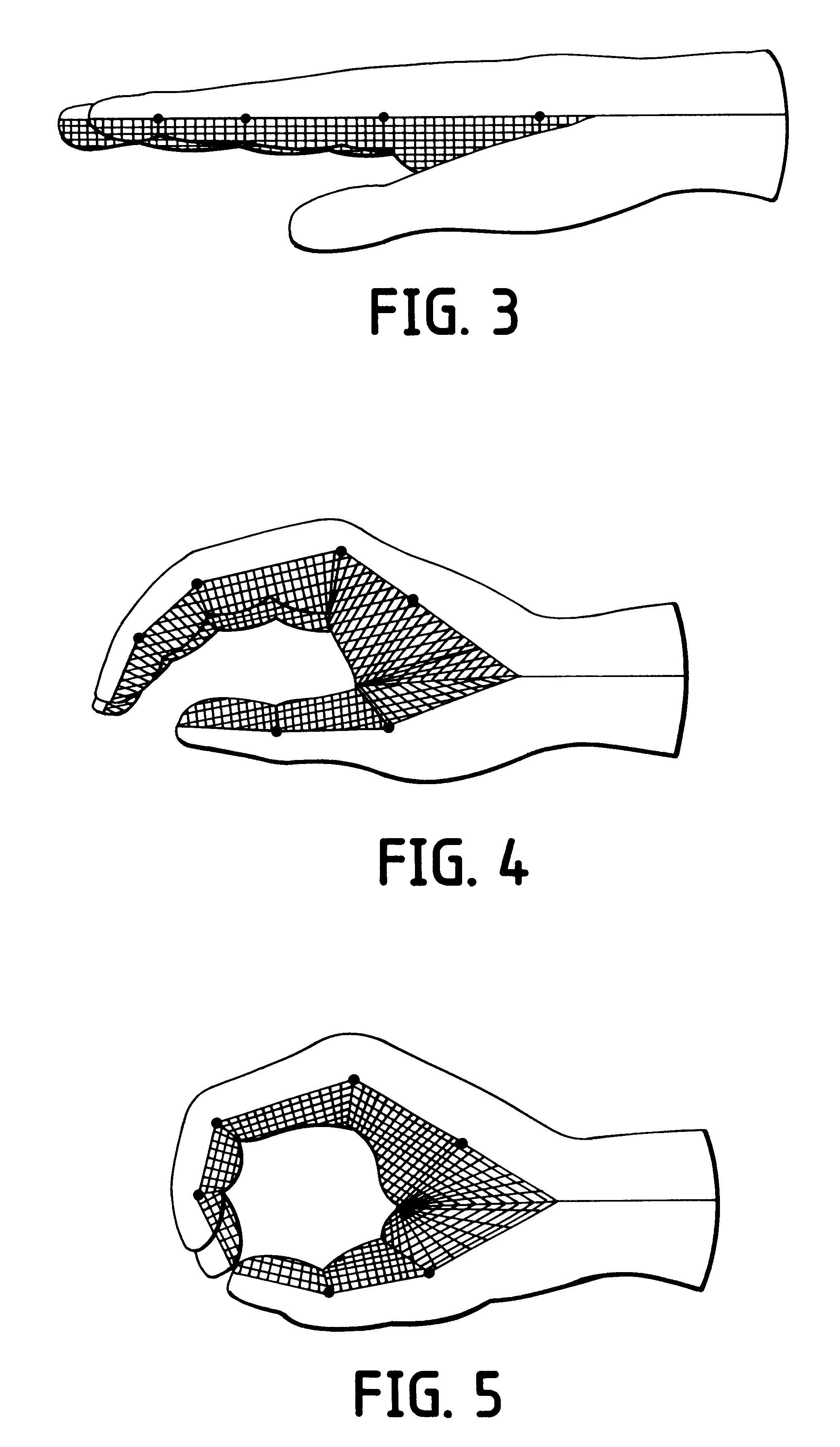Protective garment
a protective garment and garment technology, applied in the field of protective garments, can solve the problems of affecting the safety of workers, the danger of cutting helpers, and the presence of used hypodermic syringes in public places, and achieve the effect of quick and easy fastening
- Summary
- Abstract
- Description
- Claims
- Application Information
AI Technical Summary
Benefits of technology
Problems solved by technology
Method used
Image
Examples
Embodiment Construction
FIG. 1 illustrates sections of two types of wire mesh for use in the invention. In a preferred embodiment, indicated by A, the wire mesh woven in the ordinary manner, and consists of stainless, non-corrosive steel, quality AISI 316. The dimensions of mesh A are 0.05 mm in wire diameter and 0.077 mm in the mesh's aperture. Mesh B shows one of several examples of a wire mesh of an alternative weaving, a so-called Twill weaving, which may be used in wire mesh according to the invention.
FIGS. 2 and 3 illustrate the placing of protective layers in a glove according to the invention. The glove comprises an inner layer (not shown) of a fabric material which is comfortable when in contact with the wearer's skin (e.g. leather or a cotton material), a number of protective layers which are composed of wire mesh, and an outer layer (not shown) of a wear-resistant material (e.g. leather).
In the preferred embodiment the inner layer and the protective layers are joined together by gluing, while th...
PUM
| Property | Measurement | Unit |
|---|---|---|
| thickness | aaaaa | aaaaa |
| thickness | aaaaa | aaaaa |
| thickness | aaaaa | aaaaa |
Abstract
Description
Claims
Application Information
 Login to View More
Login to View More - R&D
- Intellectual Property
- Life Sciences
- Materials
- Tech Scout
- Unparalleled Data Quality
- Higher Quality Content
- 60% Fewer Hallucinations
Browse by: Latest US Patents, China's latest patents, Technical Efficacy Thesaurus, Application Domain, Technology Topic, Popular Technical Reports.
© 2025 PatSnap. All rights reserved.Legal|Privacy policy|Modern Slavery Act Transparency Statement|Sitemap|About US| Contact US: help@patsnap.com



